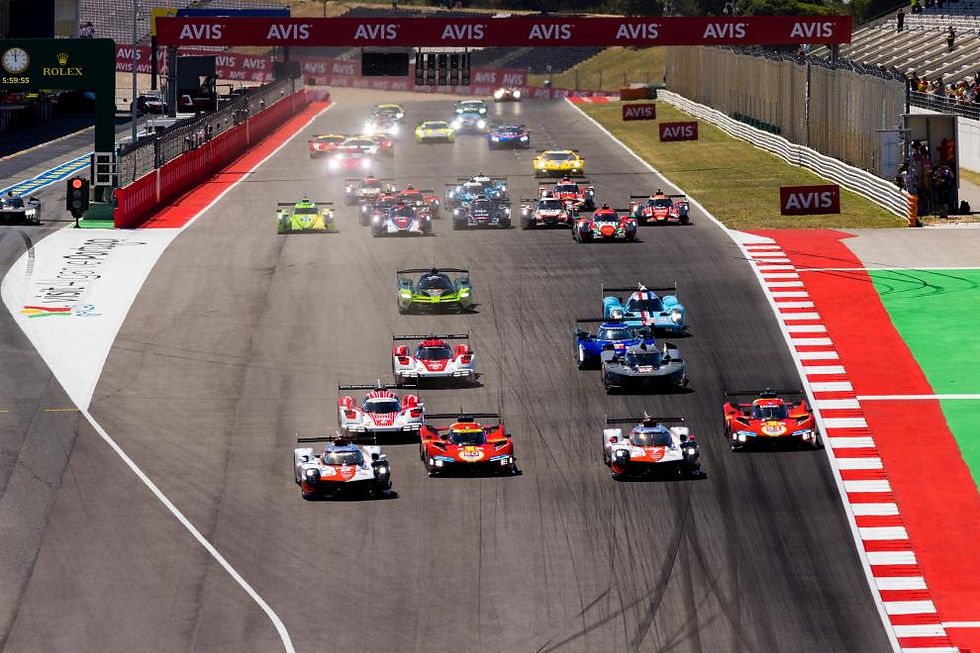Praga Bohema: the all-new Supercar from Czech racing company
- Jack Gore

- Nov 26, 2022
- 3 min read
Updated: Jul 20, 2023

Praga has been making cars of some kind since 1907: buses, trucks, cars, and even tanks. In 2012, the name was revived as a racing car manufacturer, creating the turbo rocket that we know as the R1.
However, they haven't made a car with a number plate for a long time and until now we had little inkling they ever would again. This was until they released information on their new supercar, the Bohema.
Striking, isn't it? You can really tell that is made by a company that creates streamlined racing cars; compared with the R1, it shares many design features and philosophies, such as the front end which is strikingly similar, just altered slightly to be usable on the road.
Looks will only get it so far in the market though. It certainly has a bite to its bark too; 700hp produced from a twin-turbo V6, stolen from the GT-R, powers it along, and although that may not seem much compared to the market favourites like the 296GTB, it weighs in at just 982kg. That gives it a power-to-weight ratio of 723bhp/tonne, compared to Maranello's 'measly' 556bhp/tonne.
That tunable 3.8L V6 is being supplied directly from Nissan, and Praga is also working directly alongside renowned UK tuner, Litchfield, to tune the engine. The team at Litchfield fully strip down the new engine and convert them to dry sump system. This reduces the overall height of the engine by 140mm, allowing the engine to sit lower down in the Bohema, reducing the centre-of-gravity; therefore also increasing handling performance, both on track and on the road. They also swap the turbos out for bigger ones that increase the power to that magical 700bhp.
The exhaust is fully titanium, right from the catalytic converter to the rear of the car. This supposedly gives the engine a sharp crackle, although much of the silencing is by the cats, so "occupants can still hold a conversation even at well over legal road speed limits."
The engine is paired with a Hewland sequential shifter that will allow for a fast shift and should be able to control the immense torque well.
That bodywork isn't just for admiration at car shows or crawling through crammed streets of European cities either. The aerodynamics, together with the rear spoiler, create over 900kg of downforce at 250kmh (151mph). Engineers and designers worked together in an F1 team's wind tunnel to create elegant yet performance-driven bodywork. After all, what would we expect from a company that churns out the R1, a pocket rocket that can beat GT3s at a fraction of the price?
The chassis is fully carbon fibre, making use of a carbon fibre tub, a norm in today's performance-driven supercars. The outer panels are also carbon fibre, and the rear wheel arches are designed to allow for deep storage areas, enough for, apparently, a proper race helmet. The doors are hinged forwards, and the windscreen is a classic wraparound Praga design, meaning there is "remarkable visibility inside the cockpit."
There is enough space inside for two adults to sit in "race-positon comfort" too. As in many racing cars, the steering wheel is removable for ease of access. The steering wheel itself is a work of art: look at its built-in display, switchgear and further functions, on a rim that is wrapped in Alcantara. It looks like it belongs in a racecar, although, to be fair, what did we expect? The air-con controls are mounted in a "fighter jet style roof console," above the driver, well known to be one of the coolest design features a car can have. There are storage bins in the doors and dotted throughout the console to store any loose bits that may go flying on a lap.
Just 89 will be built, in honour of the 89th anniversary of Praga's 1933 road racing victory, at £1.1 million a pop. Praga is targeting a total of twenty cars produced per year, beginning in the first half of 2023.
Will this be able to challenge already-established supercar makers, or will it obliterate them, at least in driving performance? Let us know what you think below!




Comments